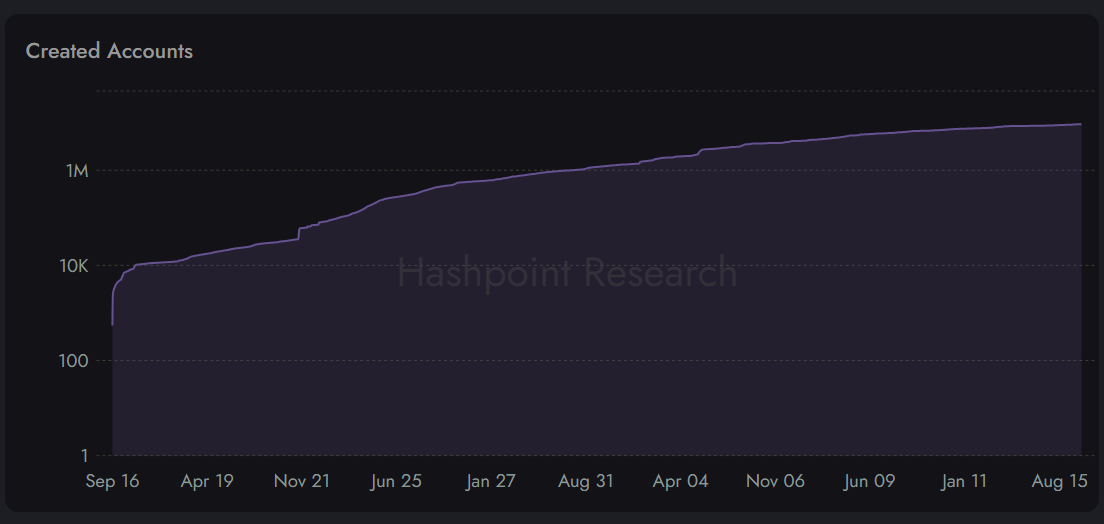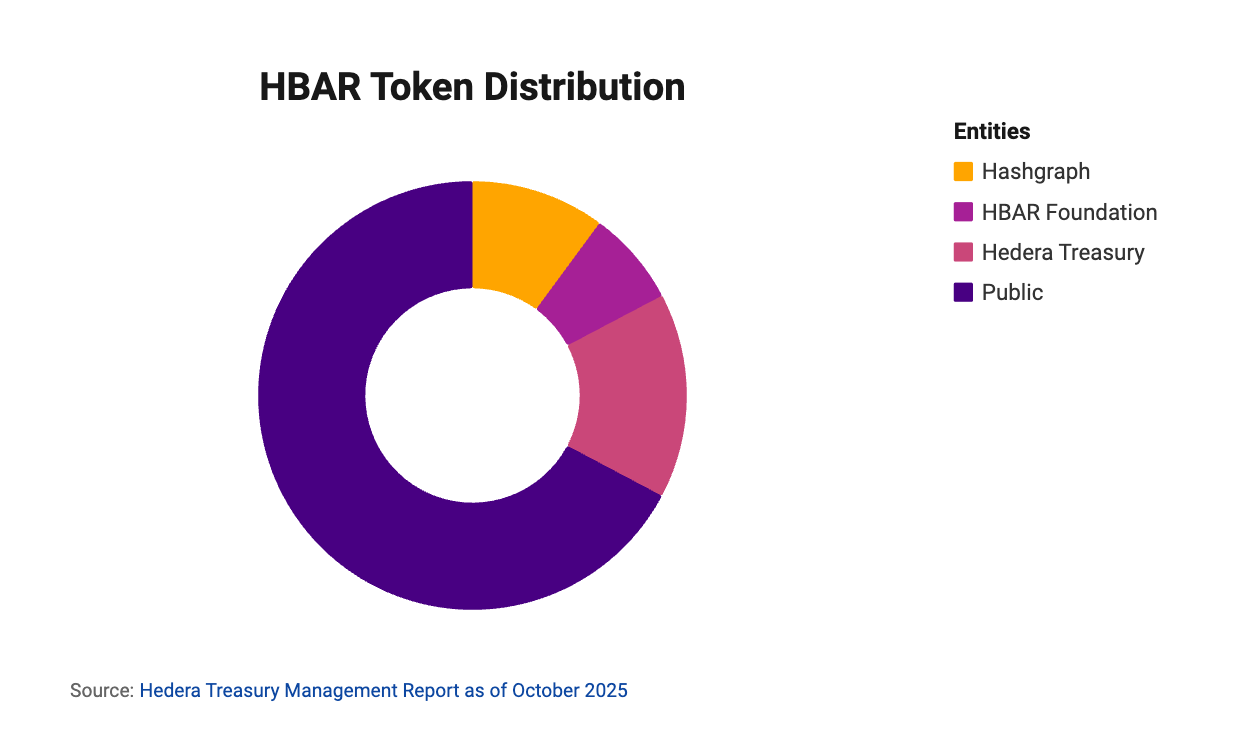
Hedera Hashgraph Overview
Hedera Hashgraph is a type of public distributed ledger technology (DLT), not a traditional blockchain. Instead, it uses a special consensus algorithm called hashgraph, which relies on a technique known as “gossip about gossip.” In simple terms, each computer (or “node”) in the network quickly shares information with others, which then gets passed along, similar to how news spreads by word of mouth.
This structure allows the network to stay secure and keep running smoothly, even if some participants behave incorrectly or maliciously. This level of security is known as asynchronous Byzantine Fault Tolerance (aBFT). Thanks to this design, Hedera can process thousands of transactions per second while using far less energy than traditional proof-of-work blockchains.
Founders and Goals
The hashgraph algorithm was created in 2015 by Dr. Leemon Baird, a computer scientist with a PhD from Carnegie Mellon University. He co-founded Hedera with Mance Harmon, who holds a master’s degree in computer science from the University of Massachusetts.
They believed older blockchain systems were too slow, energy-intensive, and limited in scale. Hedera was built to offer fast finality, high throughput, fairness, and low resource costs, features designed to appeal to enterprises and regulated industries.
The network officially launched in 2018 with 50 billion HBAR tokens minted. HBAR, Hedera’s native token, is used to pay for network services, cover transaction fees, secure the network, and power various applications. The token is also staked by validators to secure the proof-of-stake (PoS) consensus algorithm, and rewarded to validators for securing and operating the network.
Use Cases and Adoption
Hedera focuses primarily on enterprise-grade applications. The network also encourages broader adoption through partnerships, grants, and ecosystem programs.

Governance and Network Structure
Hedera is overseen by the Hedera Governing Council, a rotating group of major global corporations. This council is responsible for key decisions, including software upgrades, treasury allocations, and policy updates. Member names have included Google, IBM, Boeing, LG, Deutsche Telekom, DLA Piper, Nomura, Tata Communications, UCL and others
While anyone can send transactions or view network data, only approved entities currently operate validator nodes and participate in consensus. In the future, Hedera plans to allow permissionless node operation (anyone can run a node) while keeping the council structure to guide platform-level governance.


Research and Development
The company behind the technology, Swirlds Labs (formerly Hashgraph), plays a key role in advancing Hedera’s ecosystem. Their work focuses on maintaining the core protocol, developing tools for enterprises, and exploring new “shared-worlds” technologies such as private or permissioned networks.
Key Functions and Responsibilities of Swirlds Labs:
Organizationally, some roles shifted: many technical and management roles previously under Hedera Hashgraph, LLC moved to Swirlds/Hashgraph Labs. Messari+1
Network Activity
On Hedera, not all transactions are the same "send/receive" transaction types like on blockchains. The network supports multiple on-chain transaction types tied to its consensus and services. The main categories are:
Over the past year, aggregate transaction volume on the network has held steady at around 500,000 transactions per day, with heavier transactional activity in Q4 2024 and Q1 2025. A basic HBAR or token transfer typically costs around $0.0001 USD, irrespective of transaction size. The average fee per HBAR transaction is $0.001 USD, with finality in 3 to 7 seconds. Finality refers to the point at which a transaction is considered irreversible and permanently confirmed. Once a transaction reaches finality, it can’t be changed, canceled, or reversed.
Additionally, active and unique addresses are key metrics for assessing a network’s fundamental value under Metcalfe’s Law, which holds that a network’s value is proportional to the square of its connected users (n²). According to Hashpoint research, total accounts at the network stand at 9.26 million as of October 2025. Over the past year, new account creations have mostly held around 7,000-10,000 per day.
.png)


Although HBAR crypto transactions dominate the transaction count, other transaction types may carry outsized economic value (e.g. large token minting, swaps) relative to a simple HBAR transfer. As DeFi, tokenization, NFTs, and other token-based use cases grow on Hedera, HTS and contract usage may increase their share. HCS is often used in enterprise, oracles, logging, or cross-chain flows; these use cases may not involve many transfers but still matter for utility. Additionally, some transaction types are cheaper or require fewer “steps,” which can influence how many transactions get submitted to the network.
Token Supply and Allocation
Of the 50 million tokens created upon network inception, 84.8% have been released. Total token distribution is as follows:

The current token supply allocation breakdown can be understood as follows based on the most recent Hedera Treasury management report in September 2025. Tokens will be released over a period of 15 years from the initial 2018 launch, at which point the maximum circulating supply of 50 billion tokens will have been reached.

Hedera - The Trust Layer of the Internet
Hedera Hashgraph was founded by Dr. Leemon Baird and Mance Harmon with the goal of overcoming the performance and energy limitations of early blockchains, delivering a fast, fair, and secure distributed ledger suited for enterprise and regulated environments. Since its launch, Hedera has steadily grown its ecosystem across diverse use cases, from tokenized assets and payments to supply chain tracking, carbon markets, and digital identity solutions, backed by strategic partnerships and real-world adoption. Its governance model, anchored by a rotating Governing Council of global enterprises, provides stability and transparency while the network gradually moves toward greater decentralization. Ongoing research and development, led by Swirlds Labs and ecosystem contributors, continue to expand Hedera’s capabilities and tooling. With consistent network activity, low transaction fees, and a fixed supply of 50 billion HBAR tokens, allocated across ecosystem growth, governance, and network security, Hedera is positioning itself as a foundational layer for the next generation of digital infrastructure.
Risks & Disclosures
HBAR is subject to unique and substantial risks, including significant price volatility and lack of liquidity and theft. HBAR is subject to rapid price swings, including as a result of actions and statements by influencers and the media, changes in the supply of and demand for digital assets, and other factors. There is no guarantee that HBAR will maintain its value over the long-term.
The statements, views, and opinions expressed herein are those of the Canary Capital Group LLC. The information presented is derived from sources the Firm believes to be reliable; however, the Firm makes no representation or warranty as to the accuracy, completeness, or timeliness of such information. The digital asset landscape is rapidly evolving, and information provided may change over time without notice.
Sources
https://hedera.com/treasury-management-report